It will be kidding time here in a few short months and we just can't wait starting taking care of baby goats, they're so adorable! Our first year kidding we were so nervous and were not sure what goat kidding signs to look for.
We knew how to tell goats are pregnant, so we knew we definitely had babies on the way. We had so many questions about what the goat labor timeline would look like.
[ez-toc]
We wanted to be sure that we would be there when our does kidded, so we needed to know what the common goat kidding signs to look for were.
If your goats are close to kidding, make sure you have your goat kidding supplies ready too!
Haven't bred your goats yet, but want to know all the details? Check out the Ultimate Planner for Breeding Goats.
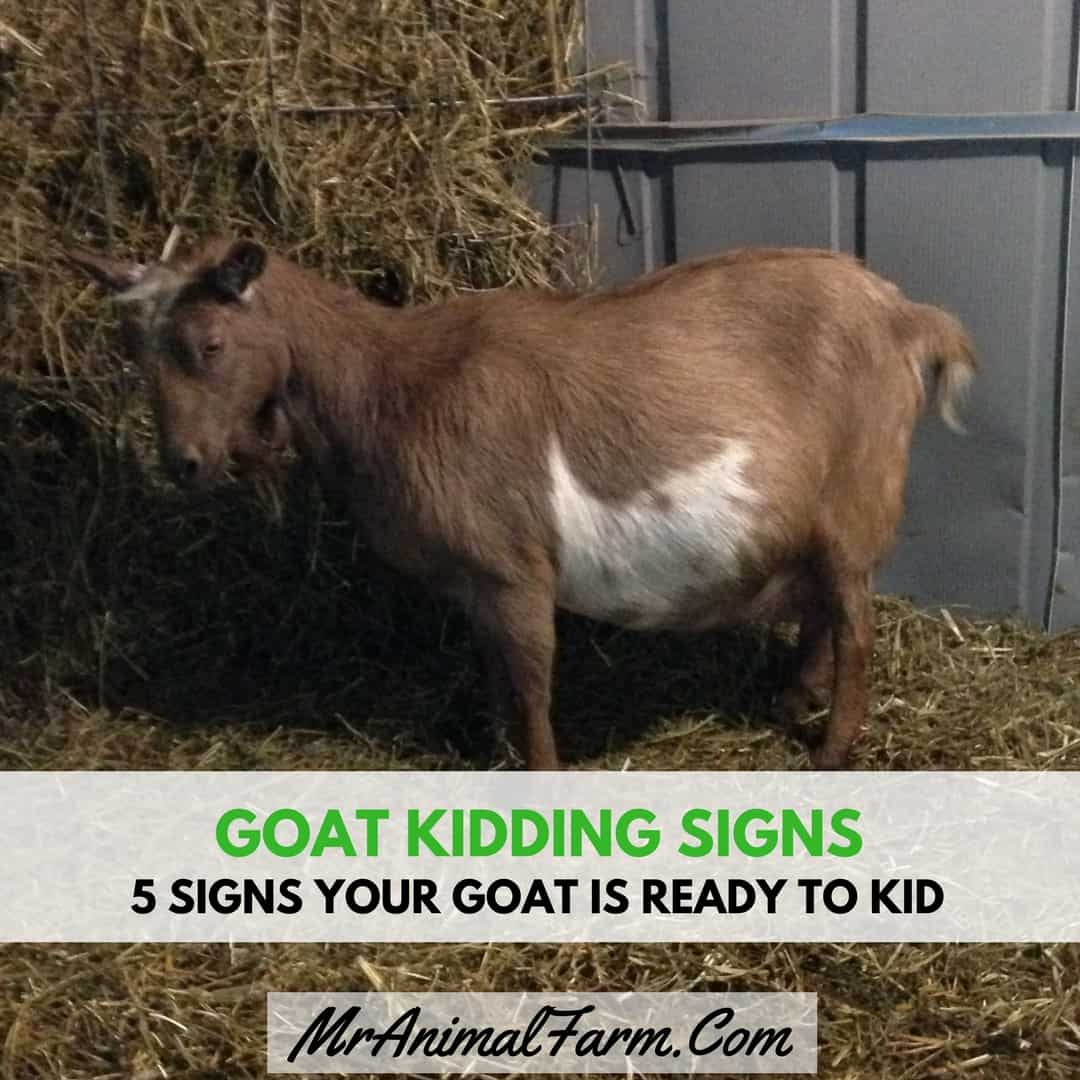
The Top Goat Labor Signs
Loose ligaments, laying more, filling udder, behavior changes, isolation, pawing and discharge are just some of the signs your goat is getting ready to go into labor.
We have split these signs into 4 categories that follow the typical goat labor timeline; early stage, pre-labor, active labor, and after labor.
Early Stage
These are all of the signs to look for in the weeks and days leading up to your goat's due date.
Remember, every goat is different. These signs can vary between goats by a few hours or even a few weeks. A goat can kid up to 7 days early and still have a viable kid. They can also go about 7 days past their due date and have things be fine.
Anything close to or over 7 days past a due date, in our experience results in at least one kid being DOA. The passing of the kid before birth seems to delay labor progression.
You will want to start checking your does that are coming due about 2 weeks ahead of time. This will establish a baseline for what you can expect in future kiddings.
Laying down a lot
This is only a slight early labor warning sign. Goats can lay around a lot, in general and a pregnant goat may lay around even more just because she weighs more and gets tired more easily.
They will also lay down if their feet are sore (so make sure that you know how to trim goat hooves well and keep them trimmed regularly).
But, if they are close to their due date, their hooves are fine, and they are STILL laying around more than usual, you may want to start keeping a closer eye on them.
Loose Ligaments
One of the signs of early labor for goats is when your does ligaments get loose. You should start feeling your does ligaments before it gets close to her kidding time, that way you know what they feel like normally.
The ligaments you will want to feel are her tail head ligaments. If you feel at the top of her hip bones and run your fingers down towards her tail, you will feel her ligaments (they feel kind of like pencils).
As your doe gets closer to kidding time, these ligaments will get softer and softer. Once you can no longer feel these ligaments (you will literally be able to touch your fingers together around her tail head), then she should be kidding very soon.
Of note, sometimes a doe will seem to loose her ligaments, but then they will come back some, only to go away again later.
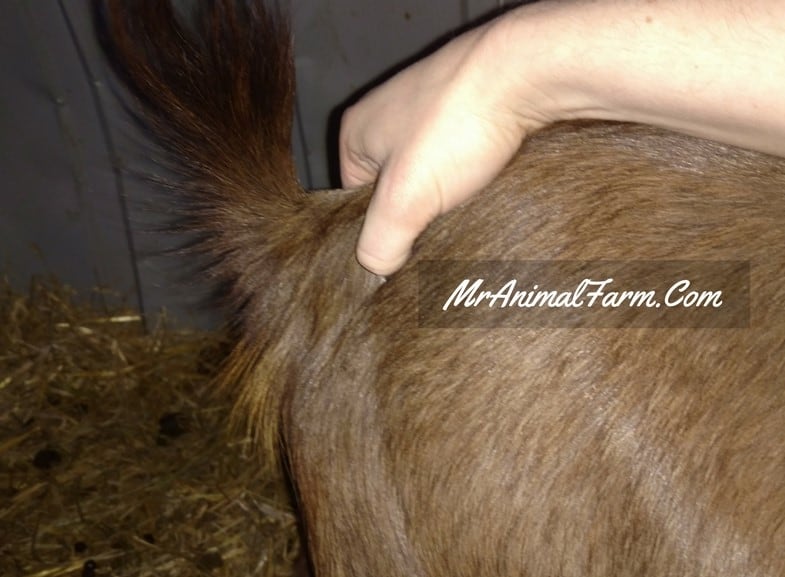
Full Udder or Bagging up
Bagging up is one of the easiest signs on the early goat labor timeline to spot. You will notice that your doe will start to get milk in her udder as her pregnancy goes on.
However, once she is completely full -- her udder will look almost shiny and her teats will actually be full. Once her udder is fully bagged up, she will be kidding very, very soon.
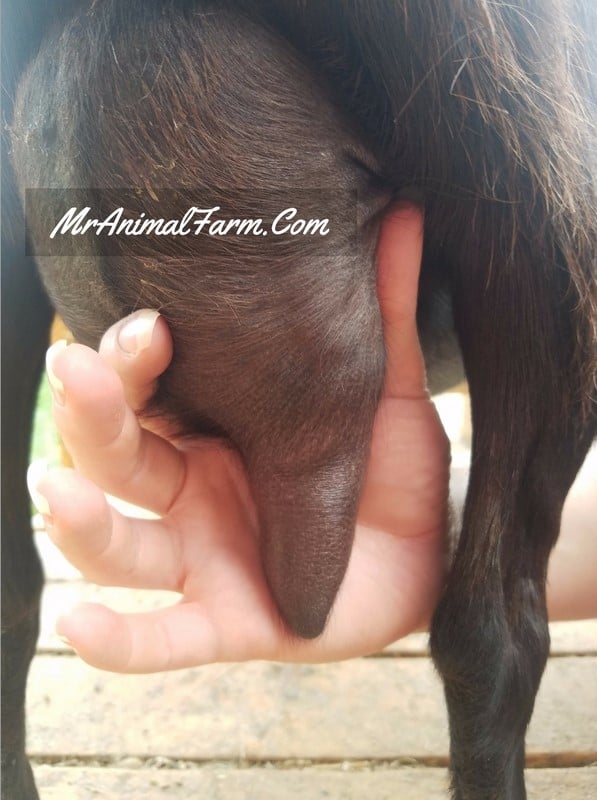
Sunken Sides or Babies Dropping
Goats, like humans, will get a big pregnant belly. Some goats will look more pregnant than others. Their bellies will grow straight out to the sides.
One of the signs of goat early labor is their sunken sides. As the babies get ready to be born they will drop (also like humans) and get lined up for birthing time.
When this happens, your does sides will suddenly look sunken in. This is a sign that kidding time will be coming soon.
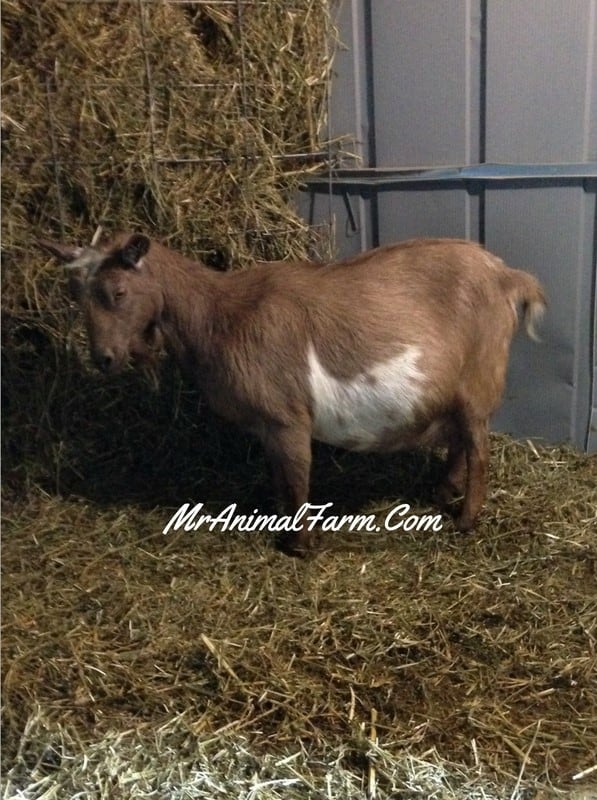
Change in Behavior
Another of the goat kidding signs that you can look for is that a does behavior may change as kidding time comes close. She may start to separate herself from the herd.
Last year, the day before ourr goat Chloe gave birth, she stayed in the stall all day by herself instead of going out to graze. Does who are really friendly may get a bit wild and does who are a bit wild may get much more friendly.
Your girls may become much more vocal. You may also see your girls show more interest in other newly born babies. They may also start to paw at the ground and become restless. These are definite signs of a goats early labor and you should expect kids soon.
Need more help for your Kidding season? The Ultimate Goat Breeding Planner has you covered!
Swollen Vulva
You will notice your does vulva and vaginal area will start to swell.
Isolation
A doe getting close to kidding will start isolating themselves.
Pre-Labor
Once you have spotted some or all of the early stage signs you will know you're getting close. The next step in the goat labor timeline is pre-labor.
In pre-labor you are just a few days or hours away from seeing your first kid. These signs usually show up a few days to a few hours before labor begins.
Extra Discharge
One of the signs of goat labor is extra discharge. In our experience some of our goats had discharge before kidding and some did not.
However, if your goat has discharge before kidding, you can be sure they will be kidding soon. Just how soon, you can't be for sure as some goats will have this discharge a week or so before they actually kid. But it is definitely a goat kidding sign you can watch for to know your does is getting closer to giving birth.
One thing to look for; the discharge should be clear or a translucent white. In our experience, if it is tinted a red or brown color, there may be a problem.
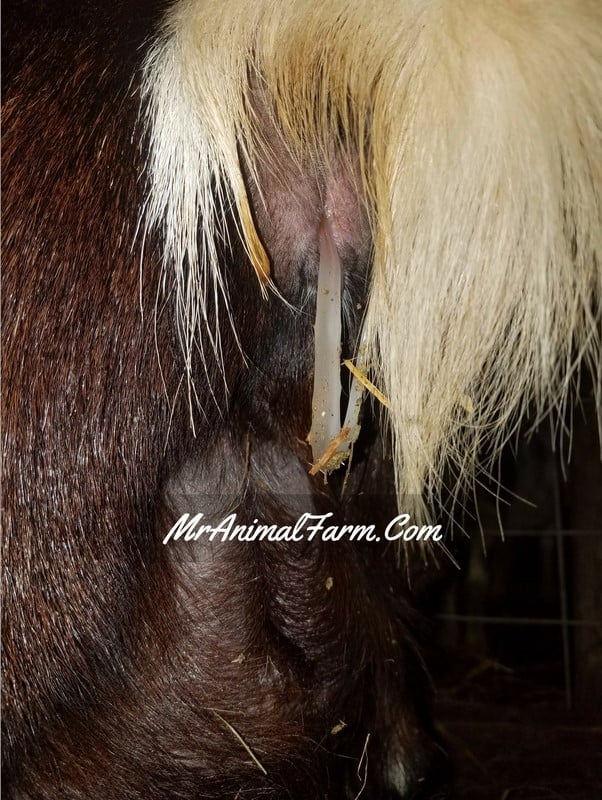
Talking
You know you are getting close when your doe starts talking. This is not your typical goat call. This is a softer, lower sound. They will sometimes talk to you, they may talk to their belly, or answer back to other newborn kids calling for their mothers.
Nesting
Nesting is a natural instinct with goats. They are essentially preparing a nice, safe place for their kids to be born. Preparation may include pawing the ground, moving bedding material around, and testing different areas of their kidding stall until they get things just right.
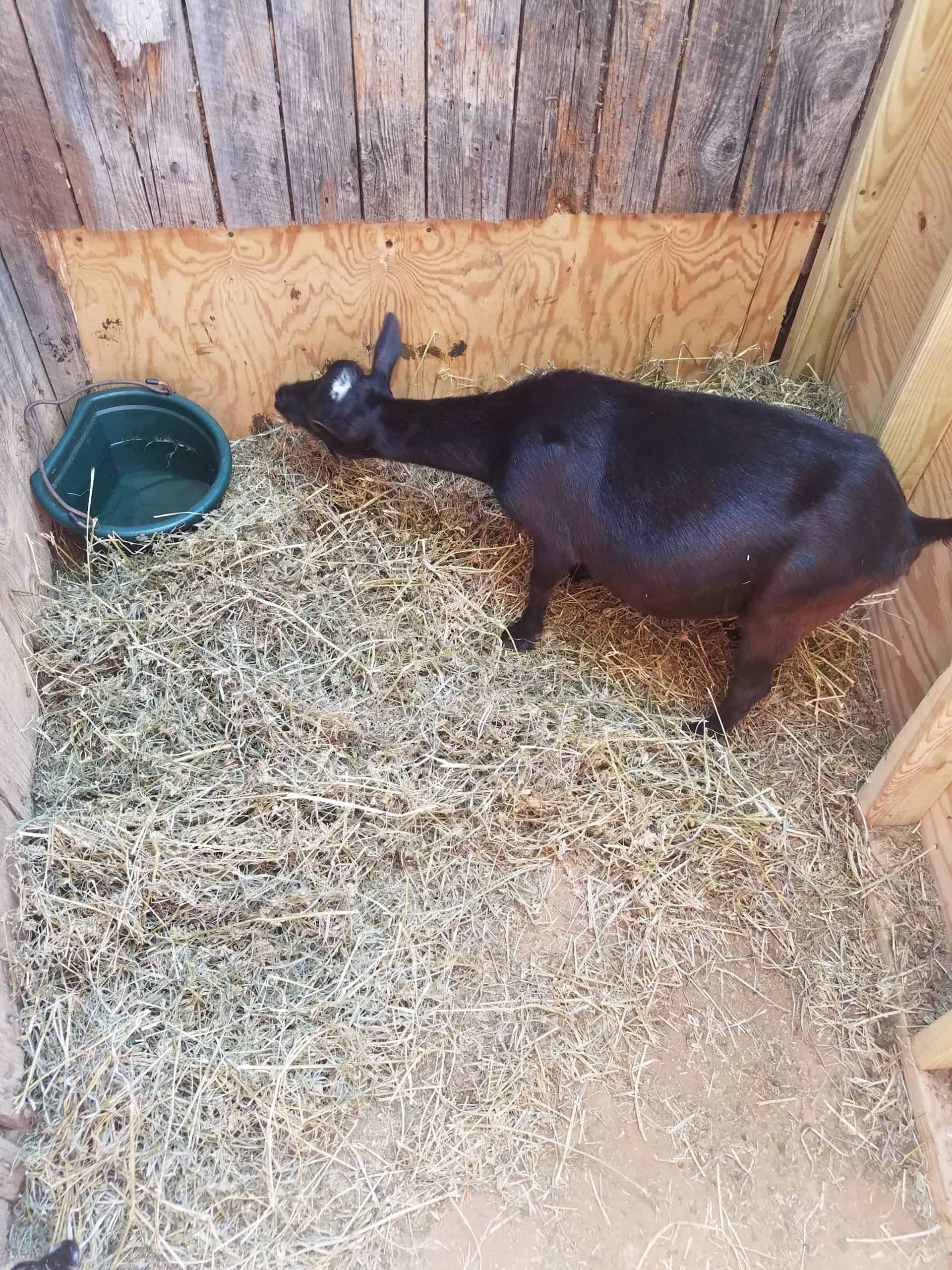
Stretching
Your goat may be starting to show some signs of discomfort at this point. They will start doing various types of stretches like arching their back with their legs locked straight.
They may also start standing on things with their front legs to try and move the babies into the correct birthing position.
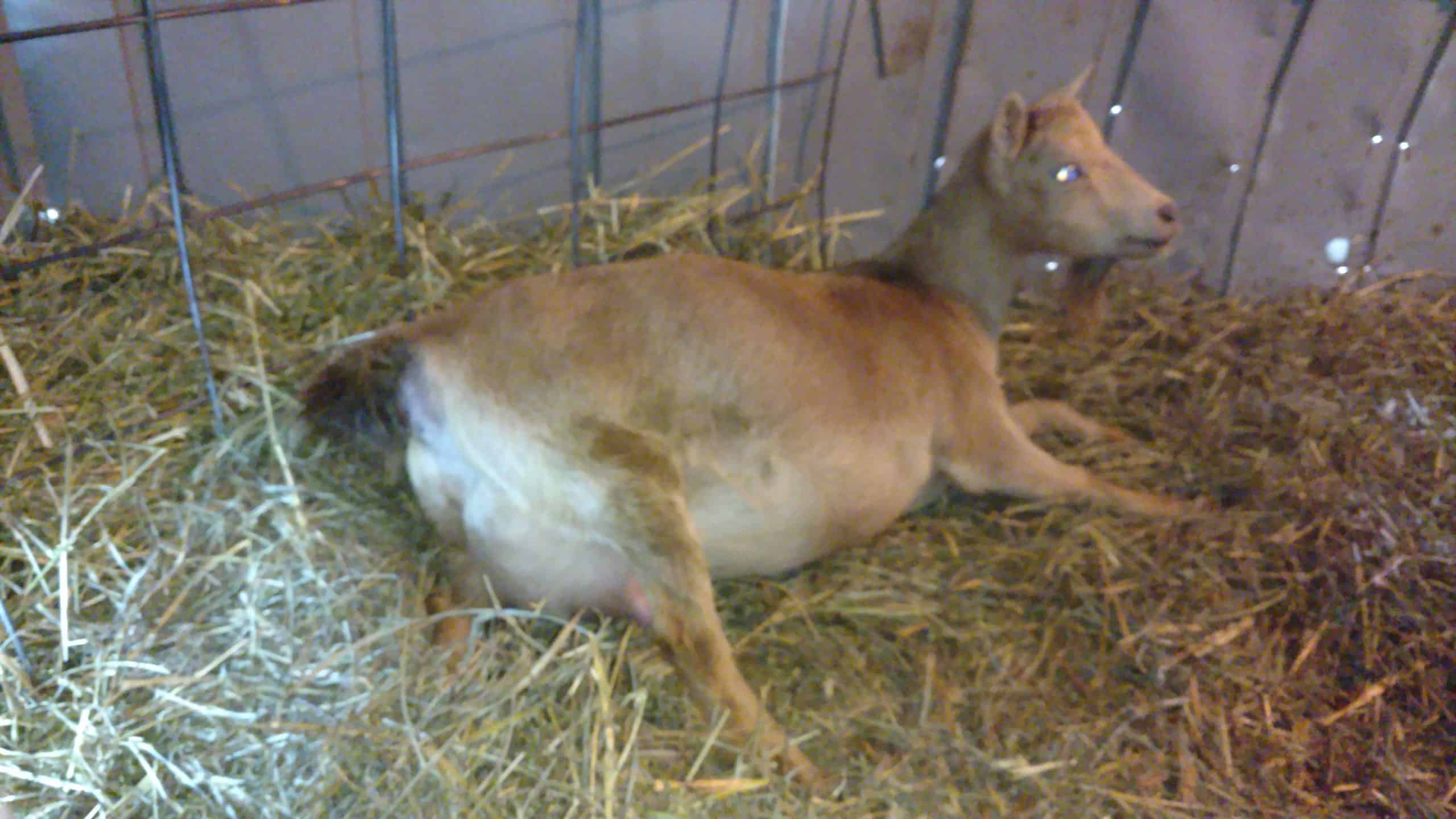
1,000 Yard Stare
The thousand yard stare is usually one of the final signs of pre-labor. They may be having contractions at this point, they just are not quite visible to us.
You will know this stare when you see it. They will usually be acting normally, chewing their cud, when all of a sudden, they will freeze in place. They will often have a hyper focused, glazed over look in their eyes. After a short bit of time, they will "unfreeze" and go right back to chewing their cud.
Sometimes they will also press their head against another surface, be it the wall, another goat, or you.
Active Labor
This is where things start to get exciting. These signs are clear that the waiting game is over, your goat is in active labor and you will have cute baby goats very, very, VERY soon!
Contractions
As we mentioned above, the thousand yard stare, and maybe even the stretching phase, is likely the start of contractions. These contractions, however, will be much more obvious.
In addition to more stretching and staring, they will also start to raise their tail head and hunch with their belly. Their vulva will contract and expand.
If they are laying down, they will likely do a lot of neck stretching. It isn't uncommon for them to roll to their side and stretch out one of their hind legs. They will usually stop chewing their cud during these contractions.
Discomfort
Goats will tend to become fidgety during this stage; moving from one spot to another in an attempt to get more comfortable and further move the kids into the best position.
You may also notice them starting to grind their teeth and breath heavier.
Pushing
Usually after frequent contractions, specifically once they have started to roll and stretch out a leg, pushing is not too far off. The doe will tilt her body, bear down, and push.
Often times, they will also grunt and curl their top lip, depending on how far back the baby is in the birth canal. At this point, the vulva will start to open.
You will want to see your first kid within about 30 minutes of good pushing. If you don't have a first kid delivered in that timeframe, you want to go into the birth canal and check to see what is going on.
Bubble
After a bit of pushing, you will see a bubble start to come out. This is the birthing sack. Sometimes the first bubble will be small and filled with fluid.
This bubble is roughly the same color and transparency of the discharge from earlier. You should be able to see through it enough to spot the baby goat's front hooves and maybe their head. They should be in diving position.
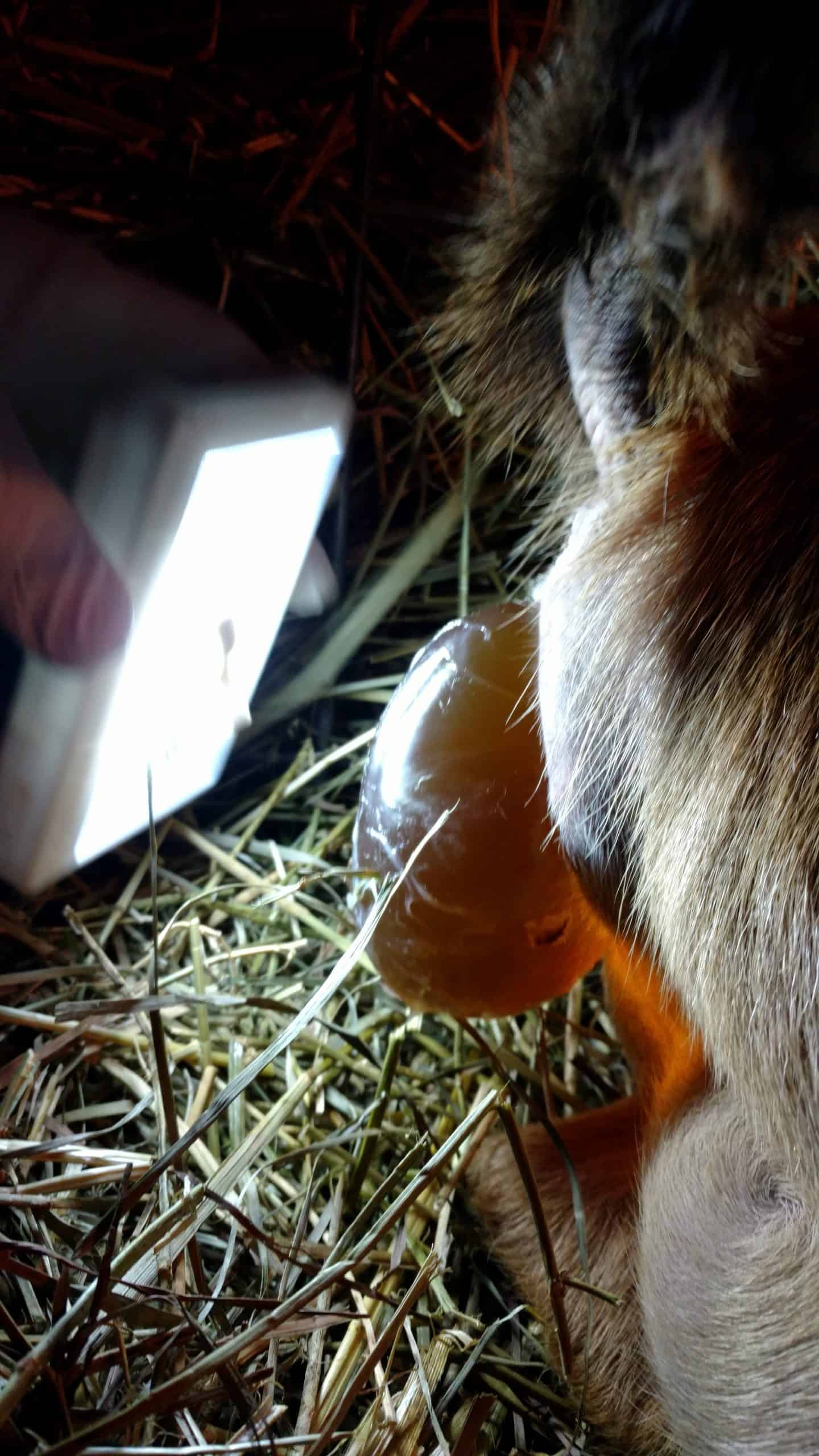
Birth
If all is going smoothly, she should be able to push the baby goat right out. If it seems like she is having trouble, you can assist her by pulling the baby a bit. You just want to make sure they are in a proper diving position.
The bubble may or may not need to be popped once the baby is out. If it does not on it's own, you can do it for them. Use a towel and clear the fluid away from their nose and mouth then set them in front of their mother.
Depending on how many kids she is carrying, she may go through the pushing through birth stages multiple times.
Typically, after the first kid is born, you will see pushing and a second kid within a few minutes. Although, sometimes it can take longer and up to a few hours.
After Labor
The last stage of the goat labor timeline is after labor. Here are a few things that will happen immediately after your goat has given birth.
Placenta
After all of the kids have been successfully delivered, the goat will eventually pass her placenta. This can be immediate or take a few hours. She may or may not eat it. If she does, do not be alarmed, it is a source of nutrients for them and not at all dangerous.
Clean Up
Most of the time the new mother will be fine cleaning her babies on her own. We like to make sure that their nose and mouth are clean right away but otherwise, the doe will do a good job.
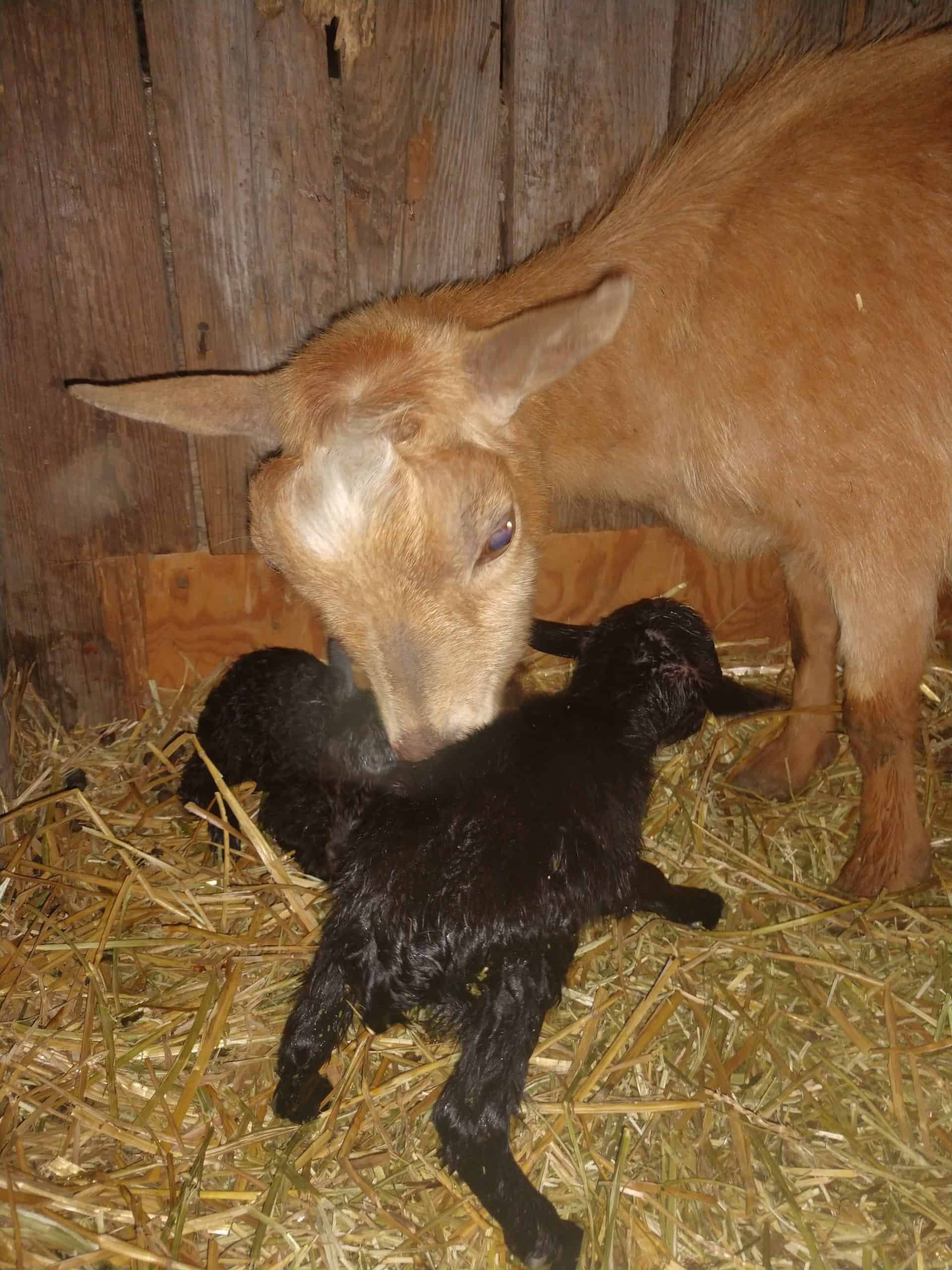
However, if it is too cold for them and she has multiple kids, we will assist in getting them dry so they do not catch a chill and become sick. You can do this with a towel or even a blow dryer on a low setting.
Nursing
Once the babies are clean, they will start to stand shortly after being born. They will experience varying levels of success in trying to nurse. You may need to help them find the teat, if they are having too much trouble.
Final Thoughts
That's all there is to it! Your first time may be a little scary since it's new, but these are the most common and consistent goat labor signs we have observed over the years.
If you need more help getting your goat breeding running smoothly, check out The Ultimate Goat Breeding Planner - checklists, record sheets, supply lists and more to keep your breeding season going so you can enjoy the baby goats without worry.

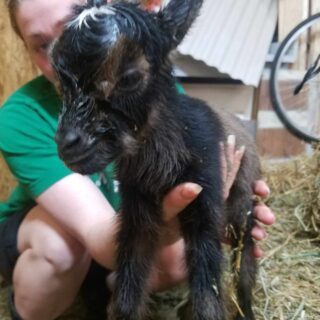
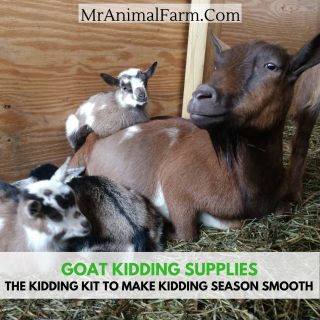

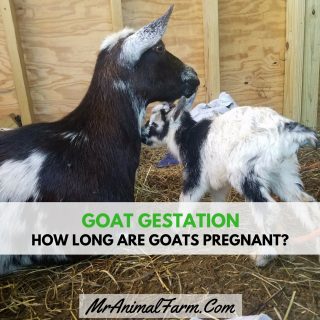
Rebecca says
My goat just about 148 days, we think, first time having a goat, and she's on her own can't wait, shes indoors as our weather very wet, and stormy here in Ireland. Love reading all your information and tips on goats thank you
Hayden says
My goat she is supposed to be due May,12,2019 and today is April,16,2019 and she is acting weird every time I go out side she starts to rub on boards but no discharge her belly is starting to drop she has a little bag and when she lays down she paws and just by looking at her tail it looks very very loose and i'm very concerned the people i bought her from said she was bred and I don't know the date but I texted them and they told me and her due date is in may.
MrAnimal Farm says
Has she kidded? Sometimes tail ligaments can be pretty gone for a bit before kidding.
MrAnimal Farm says
Has she kidded yet? Sometimes they look close for quite a while before kidding.
Sam says
My goat "Sita" has not sunken in yet, bit she has been having alot of discharge, and she is super restless she keeps lying down and pushing and then getting up and walking around with her eyes closed, she has had alot of contractions.
Josh says
Our Nigerian Dwarf's bag has not filled and she has only a small amount of discharge. She was bred when we bought her but we did not know her due date. However, we did notice today she started pushing her head into the walls and shifting her weight frequently. Her sides have been sunken for about a week and her ligaments have been soft for about 3 weeks.
We just moved her into a kidding stall based on this new behavior. It looks just like my Nubians just before they give birth, but this is my first time with a Nigerian Dwarf. If my past experience has taught me anything, she will probably kid sometime around midnight tomorrow after we have given up.
MrAnimal Farm says
Hi Josh,
It sounds like she is probably at the start of labor. Usually their udder fills before kidding, but not always. Sometimes it will fill literally RIGHT before they kid. And occassionally it will fill right at kidding/right after. The other behavior you mentioned definitely seems to be signs of labor.
Good luck and here's hoping for healthy kids soon 🙂
Best,
Kristin
Sienna says
This is really helpful my Nigerian dwarf is 3 days overdue and her udder looks like it wants to explode the tears are pointed outwards and when I feel it there is not loose skin that I can pull. She is a first freshener and she is my first doe to have kids. Thanks for the great information
MrAnimal Farm says
So glad we could help! Here's hoping for some super cute baby goats for you soon! 🙂
Mindy@FarmFitLiving says
These are the exact signs I follow, too. My does have tricked me so many times in the past and I used to wake up every 2 hours to check. But now that I understand the early signs and the timeline of early labor, I don't worry as much.